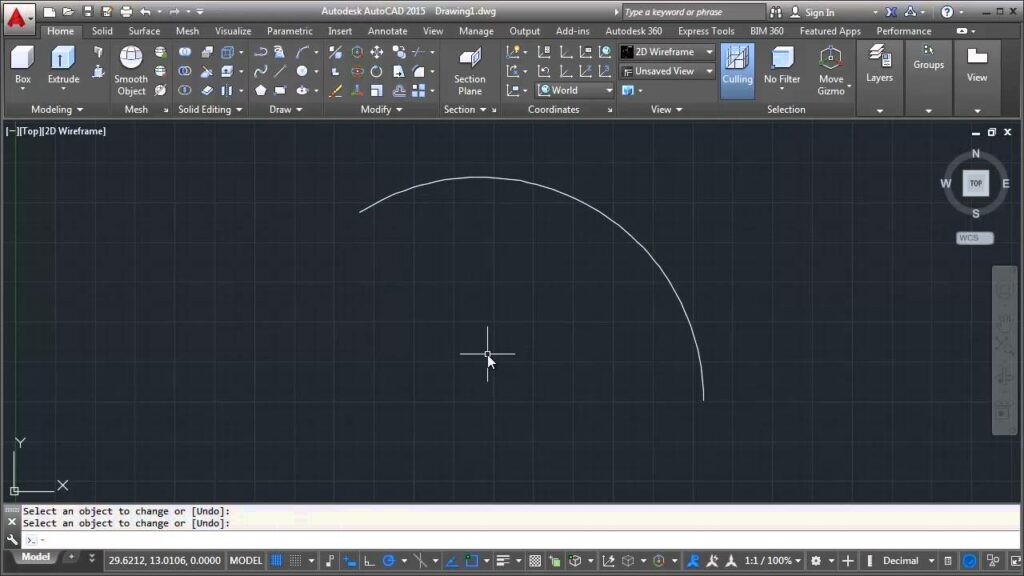Unlocking the Curved Realms: A Comprehensive Exploration of the ARC Command in AutoCAD

In the expansive universe of computer-aided design (CAD), few commands possess the versatility, precision, and creative potential of the ARC command in AutoCAD. Since its inception alongside the earliest versions of AutoCAD, this foundational tool has played an indispensable role in shaping the way architects, engineers, designers, and drafters conceive and construct digital drawings. With its ability to generate arcs, curves, and complex geometries, the ARC command stands as a cornerstone of CAD drafting, offering users unparalleled capabilities in creating and manipulating curved entities.
Origins and Evolution
The roots of the ARC command can be traced back to the formative stages of AutoCAD’s development. Introduced by Autodesk in the late 1970s and formally launched in 1982, AutoCAD revolutionized the design industry by providing a digital platform for drafting and design. From its earliest iterations, the ARC command emerged as a critical tool for creating curved elements within drawings, enabling users to generate arcs of various radii, lengths, and angles with remarkable ease and accuracy.
As AutoCAD evolved over the decades, so too did the capabilities of the ARC command. With each successive version, Autodesk introduced enhancements and refinements that expanded the command’s functionality, empowering designers to create increasingly complex and intricate curved geometries.
Basic Functionality
At its core, the ARC command in AutoCAD serves a fundamental purpose: to create arcs and curved segments within drawings. Users invoke the command, specify the starting point, endpoint, and radius (or other parameters, depending on the type of arc desired), and AutoCAD generates a perfectly curved entity based on the defined parameters. This basic functionality enables users to create arcs of various sizes and orientations, facilitating the creation of curved elements within drawings with precision and accuracy.
Versatility and Customization
Despite its apparent simplicity, the ARC command offers a wealth of versatility and customization options. In addition to creating arcs with predefined radii and lengths, users can leverage AutoCAD’s dynamic input and object snaps to generate arcs based on precise coordinates or geometric constraints. Moreover, AutoCAD provides tools to modify existing arcs, including resizing, repositioning, and altering attributes such as radius, length, or angle, enabling users to fine-tune their designs with precision and accuracy.
Furthermore, the ARC command integrates seamlessly with other AutoCAD features, such as polar tracking, array functions, and geometric constraints, facilitating the creation of complex curved patterns, arrays, and relationships. By harnessing these advanced tools in conjunction with the ARC command, designers can achieve intricate curved geometries with remarkable efficiency and control.
Beyond Basic Arcs
While the primary function of the ARC command is to create curved segments, its capabilities extend far beyond mere arc creation. With AutoCAD’s advanced editing and manipulation tools, users can transform basic arcs into a myriad of complex geometric shapes and forms. By combining the ARC command with other drawing commands and techniques, designers can produce ellipses, circles, and other curved entities, opening up a world of creative possibilities within their designs.
Moreover, the ARC command serves as the foundation for constructing more elaborate geometric constructs within AutoCAD, such as fillets, chamfers, and splines. By leveraging the basic curved entities generated by the ARC command, designers can build intricate 2D profiles and 3D surfaces that accurately represent real-world objects and structures.
Precision Engineering
In the realm of engineering and architecture, precision is paramount, and the ARC command in AutoCAD embodies this principle. With its ability to generate arcs with user-defined dimensions and alignments, the command facilitates the creation of drawings that adhere to exact specifications and standards. Whether designing mechanical components, architectural details, or civil infrastructure, engineers and designers rely on the ARC command to achieve the precise curved geometries required for their projects.
Moreover, AutoCAD’s inherent accuracy and unit management ensure that arcs drawn using the ARC command maintain consistent dimensions and alignments throughout the drafting process. By adhering to defined units and scales, designers can produce drawings that are dimensionally accurate and compatible with industry standards and practices.
Conclusion
In the rich tapestry of AutoCAD’s command repertoire, the ARC command stands as a testament to the power of simplicity, versatility, and precision. From its humble beginnings in the early days of computer-aided design to its integral role in modern drafting workflows, the ARC command has remained a cornerstone of CAD drafting, enabling designers to realize their creative visions and technical designs with unparalleled accuracy and efficiency.
As AutoCAD continues to evolve and innovate, the ARC command will undoubtedly remain an essential tool for generations of designers, architects, engineers, and drafters, shaping the future of digital design and engineering with its curved wonders.





